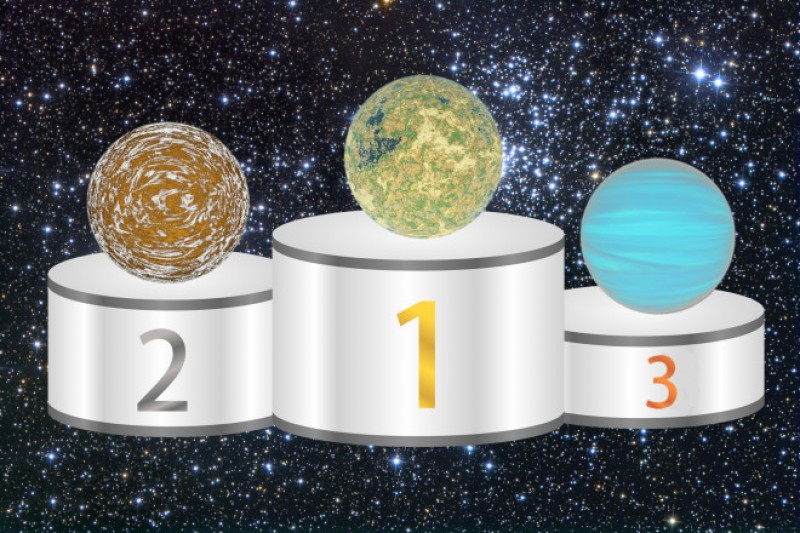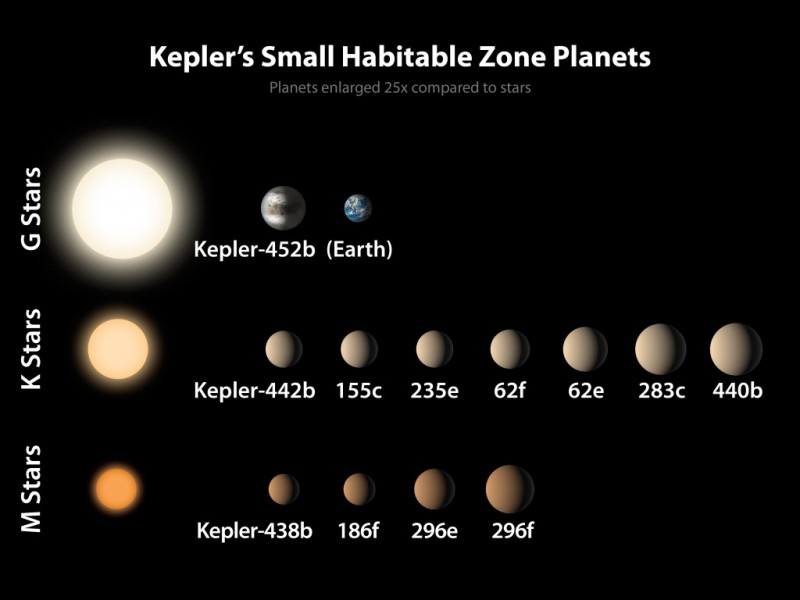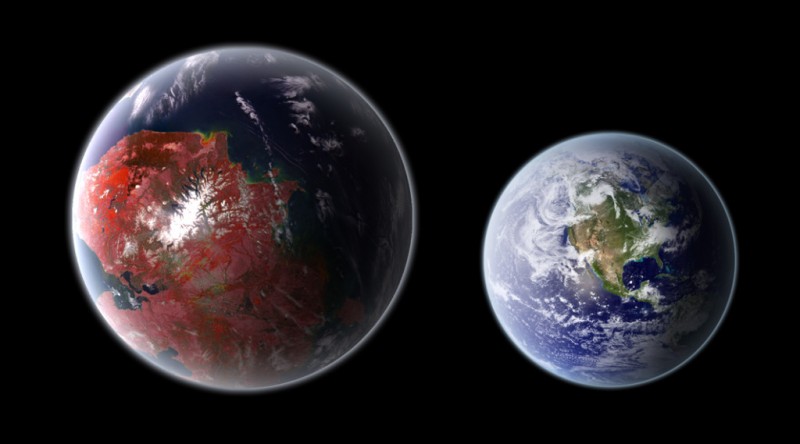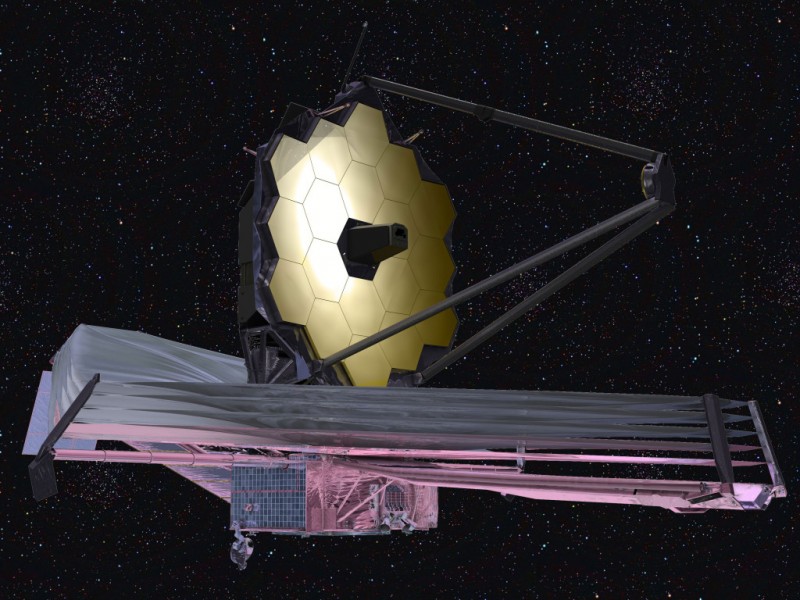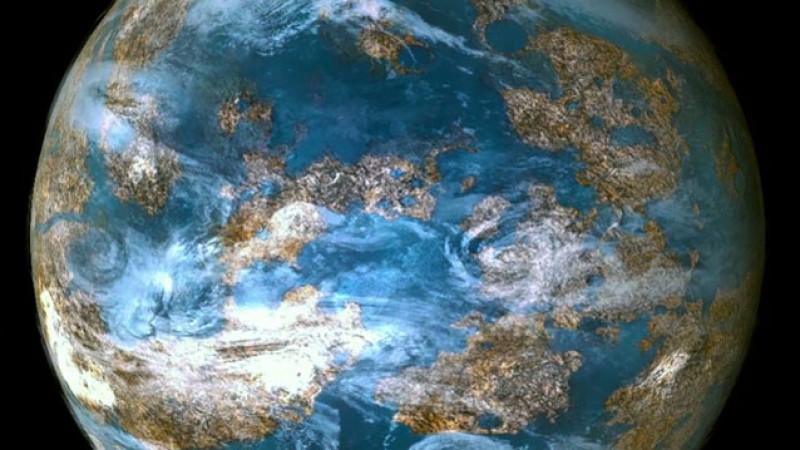Now that we know that there are billions and billions of planets beyond our solar system, and we even know where thousands of confirmed and candidate planets are located, how and where should we be looking for those planets most likely to be habitable? And, if we’re very smart and lucky in our searches, those most likely to actually support extraterrestrial life? These quite new question have given rise to one of the more daunting and consequential efforts in the field: identifying and ranking the relative habitability of the most intriguing targets. The first order answer to the question of where to look is, of course, in the habitable zone – those regions around a host star that would allow orbiting planets to have liquid water on the surface at least some of the time. As colloquially described, it would be within a “Goldilocks zone” that is not too hor and not too cold. This approach is by definition a theoretical one — at this point we have no firm detection of an exoplanet with liquid surface water orbiting a distant star. The Goldilocks approach also represents, perhaps surprisingly, a far from novel view. This, for instance, is what William Whewell, the prominent British natural philosopher-scientist-theologian (and Master of Trinity College at Cambridge) wrote in 1853:
“The Earth is really the domestic hearth of this solar system; adjusted between the hot and fiery haze on one side, the cold and watery vapour on the other. This region is fit to be the seat of habitation; and in this region is placed the largest solid globe of our system; and on this globe, by a series of creative operations…has been established, in succession, plants, and animals, and man…The Earth alone has become a World.” Whewell wrongly limited his analysis to our solar system, but he was pretty much on target regarding the crude basics of a habitable zone. His views were followed over the decades by increeasingly sophisticated theoretical assessments, including in more modern times those of Steven Dole for the Rand Corporation in 1964 and NASA’s Michael Hart in 1979. All were pretty much based on an Earth-centric view of habitable zones throughout the cosmos, and presented an essentially binary set of options: either the planet was in a habitable zone or was not. It was this approach, even in its sophisticated modern iterations, that got some of the scientists at the University of Washington’s Virtual Planetary Laboratory thinking three years ago about how they might do better. What they wanted to accomplish was to join the theoretical logic of the habitable zone with actual data now coming in from measurements of transiting and otherwise detected exoplanets. These measurements are both extraordinary and quite basic—consisting primarily of the radius of the planet, sometimes its density, its distance from a host star, the size and power of that star, the time it takes for the planet to orbit and the eccentricity or circularity of that orbit. The group was nonetheless convinced that the data available would allow for the creation of a rigorous, if early-stage and inherently incomplete “Habitability Index.” It would allow exoplanets and planet candidates to be ranked on a zero to one scale for potential habitability, rather than the relying on the traditional “HZ yes” or “HZ no.” “We certainly are constrained by the observations being made, but we do have some important physical measurements to work with,” said Rory Barnes, an astrophysical theorist with the VPL. “And what we’ve done is to connect the possibility of life with the fundamental observables we do have….This really hasn’t been done before.”
The result was a detailed paper in the Astrophysical Journal by Barnes, Victoria Meadows and Nicole Evans based on a study of the more than 4000 “Kepler Objects of Interest” identified by the space telescope. The paper showed that Kepler observations, modeling and an understanding of the dynamics of energy flows to and from a planet could together produce a list of 250 Kepler exo-objects most likely to have liquid water on their surfaces, and thereby to have the greatest potential to host life. I intentionally didn’t write “exoplanets” because nine of the top ten remain “candidate” planets detected by Kepler as transiting features that block out a small bit of light from the host star. But they have not been confirmed through other detection techniques. In creating the “Habitability Index for Transiting Exoplanets” the researchers factored in estimates including a planet’s rockiness and its rotation. They also took into account the balancing act that plays out between a planet’s albedo (the energy reflected back to space from its surface) and the circularity or eccentricity of its orbit (which affects how much energy it receives from its host star as it passes close by or travels further off.)
For instance, a life-friendly energy equilibrium for a planet near the inner edge of the habitable zone would need a high albedo, to cool the world by reflecting some of that heat into space. Conversely, a planet near the cool outer edge of a habitable zone would perhaps need a higher level of orbital eccentricity to provide the energy needed for life. Using this method, Barnes et al found nine Kepler objects with a habitability ranking higherthan Earth. The only confirmed exoplanet that made it onto the list is Kepler 442b, which has been a Kepler team favorite since it was validated and located in a habitable zone in 2015. Given this already existing interest in Kepler 442b, is the new Habitability Index that much more useful than the more traditional habitable zone assessments based on a planet’s proximity to a particular star of a particular strength? And is it more predictive than some related but considerably less complex rankings — such as the Earth Similarity Index, created by Abel Mendez and Dirk Schulze-Makuch, which assesses how much like Earth an exoplanet might be?
Many think that it does represent a substantial advance. While traditional habitable zones identify regions deemed potentially life-supporting in a generalized way, the Habitability Index identifies distinctions within a habitable zone that would make an exoplanet more or less likely to be habitable. Thus the sliding scale from zero to one rather than the simple “yes” or “no.” What’s more, the VPL ranking tool (which has been funded by the NASA Astrobiology Institute) allows astronomers to punch in their own new or different information to arrive at the single-number habitability index. This helps open the field to planets that might be quite different from Earth yet potentially habitable – an area of fast growing interest. It’s no coincidence that the VPL, and some others, are now crunching Kepler and other data to tease out the potentially most habitable planets (or objects.) First off, the measurements coming in for the first time make rankings possible and, well, immediately desirable because people love lists. But what Barnes and his colleagues came up with is not a ranking of where life might be found in the cosmos – there’s not nearly enough data for that. Rather, it’s a list of the best places to look for signs of possible life. And this is especially timely because the next generation James Webb Space Telescope is scheduled to launch in 2018.
Unlike current observatories, the JWST will be able to measure the chemical components of exoplanets and their atmospheres with some precision and sophistication –providing long-sought data needed to determine whether a planet is actually habitable.
Read more: manyworlds.space |
